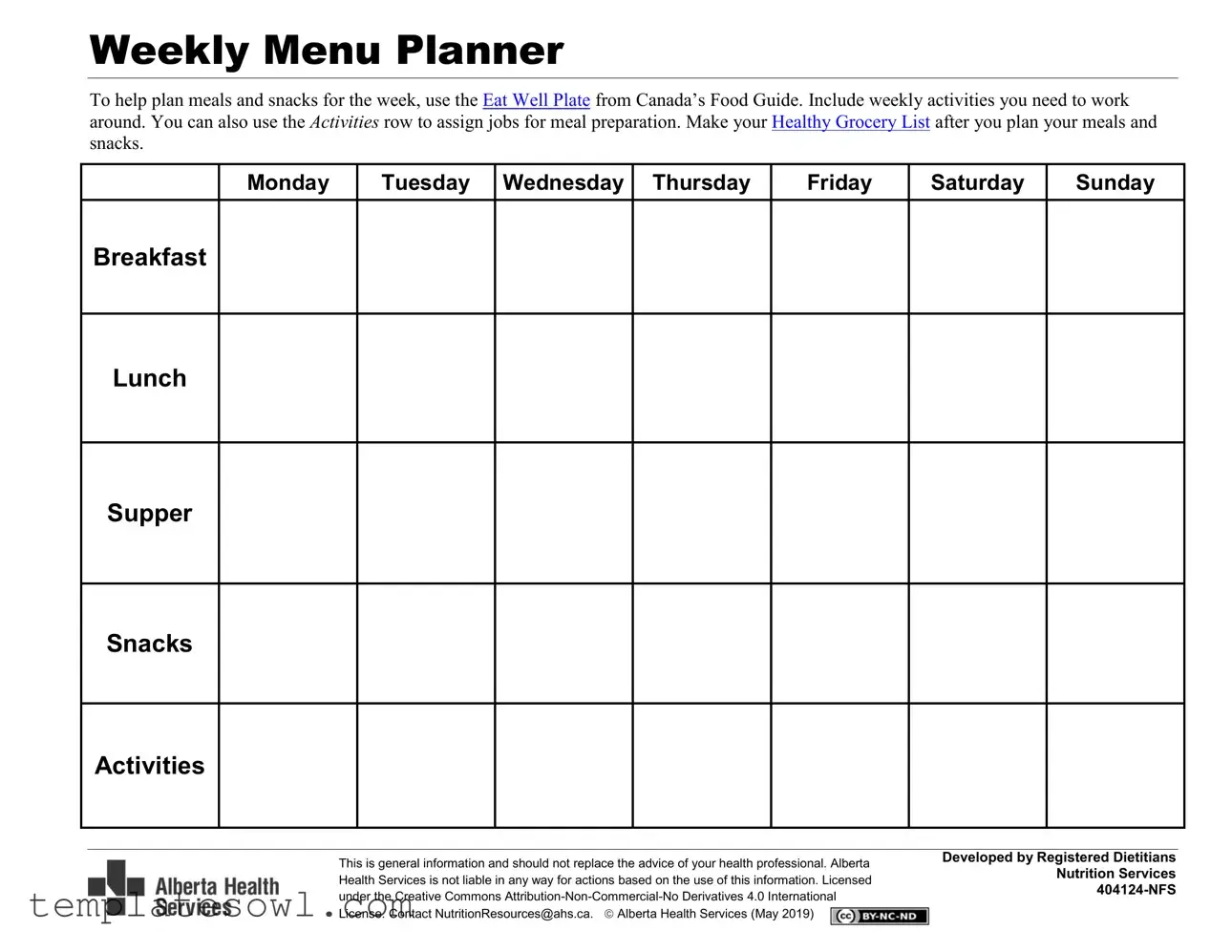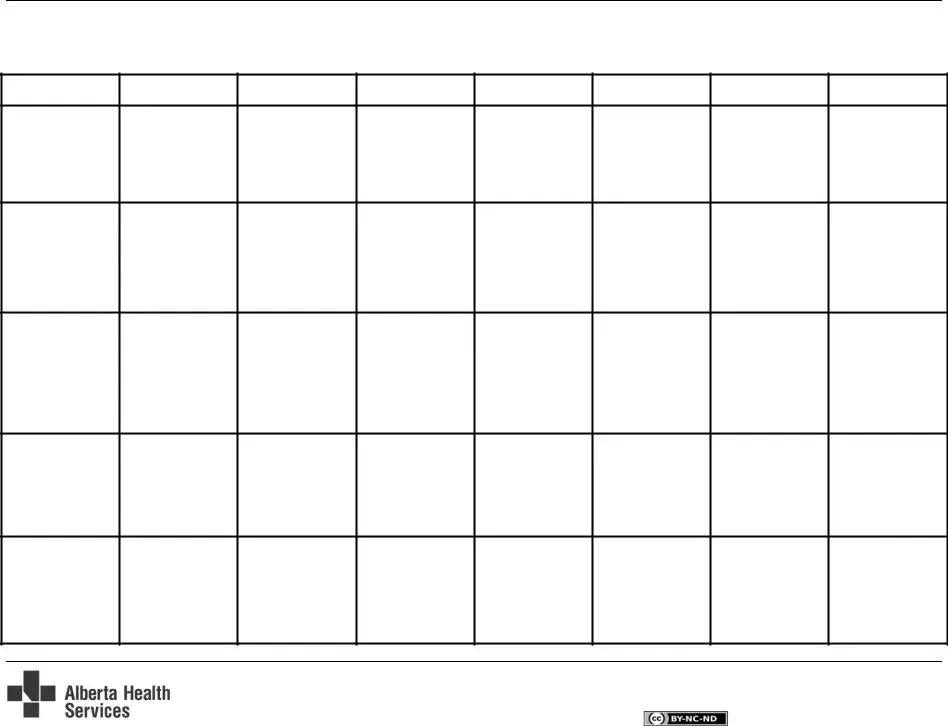When filling out the Weekly Menu Planner form, people often make several common mistakes that can lead to an ineffective meal planning experience. One frequent error is not checking the Eat Well Plate guidelines. This visual aid provides essential information about food portions, making it easier to plan balanced meals. Ignoring these guidelines can result in poorly structured menus.
Another mistake involves underestimating the importance of including activities in the planning process. Many individuals forget to list out weekly activities that might affect meal preparation. This oversight can lead to forgotten meals or rushed decisions about what to cook. Taking a moment to review your schedule can help avoid these pitfalls.
People also often delay the grocery list creation, which is a vital step after planning meals and snacks. Some think they can remember what they need. However, without a list, grocery shopping can become chaotic and lead to forgotten ingredients. Instead, create a Healthy Grocery List right after you finalize your meals.
Not filling out each meal section completely is another issue. Many users leave some sections blank, believing they will improvise later. However, this may lead to last-minute decisions that can be unhealthy or inconsistent with the overall meal plan. Planning every meal helps maintain a healthier diet.
Failing to involve family members can also be a significant mistake. Engaging everyone in the meal planning process can enhance variety and ensure family members enjoy what is served. If people do not participate, they might be less motivated to stick to the planned meals.
Some individuals neglect to schedule snacks. Snacks can play an important role in maintaining energy levels throughout the day. Lacking healthy snack options might lead to unhealthy choices between meals. Including snacks assists in ensuring that nutritional needs are met.
Another common error is misplacing the form or allowing it to stay unfilled for too long. If the menu planner isn’t readily accessible, it is easy to forget to fill it out or consult it during the week. Keep the form visible to stay on track.
People sometimes overlook the ‘Activities’ row meant for assigning meal prep tasks. This feature aims to promote shared responsibility in meal preparation. Failing to utilize it can place excessive pressure on one person, leading to burnout and resentment.
Simplifying complex meals without consideration for skills can also cause frustration. If a planned recipe is too complicated for a novice cook, it might remain untouched. Therefore, it’s wise to ensure that the planned meals align with the cooking abilities of those preparing them.
Finally, some individuals do not update their menu after the first week. Sticking to the same plan week in and week out can lead to boredom with meals. Reviewing and adjusting the menu regularly will keep your meals enjoyable and aligned with seasonal ingredients.

